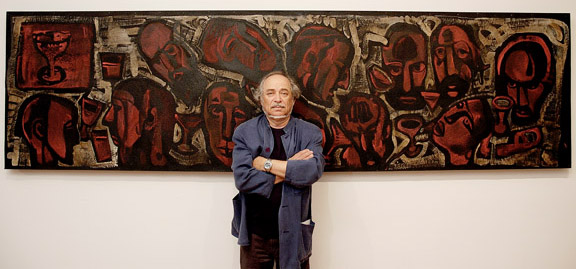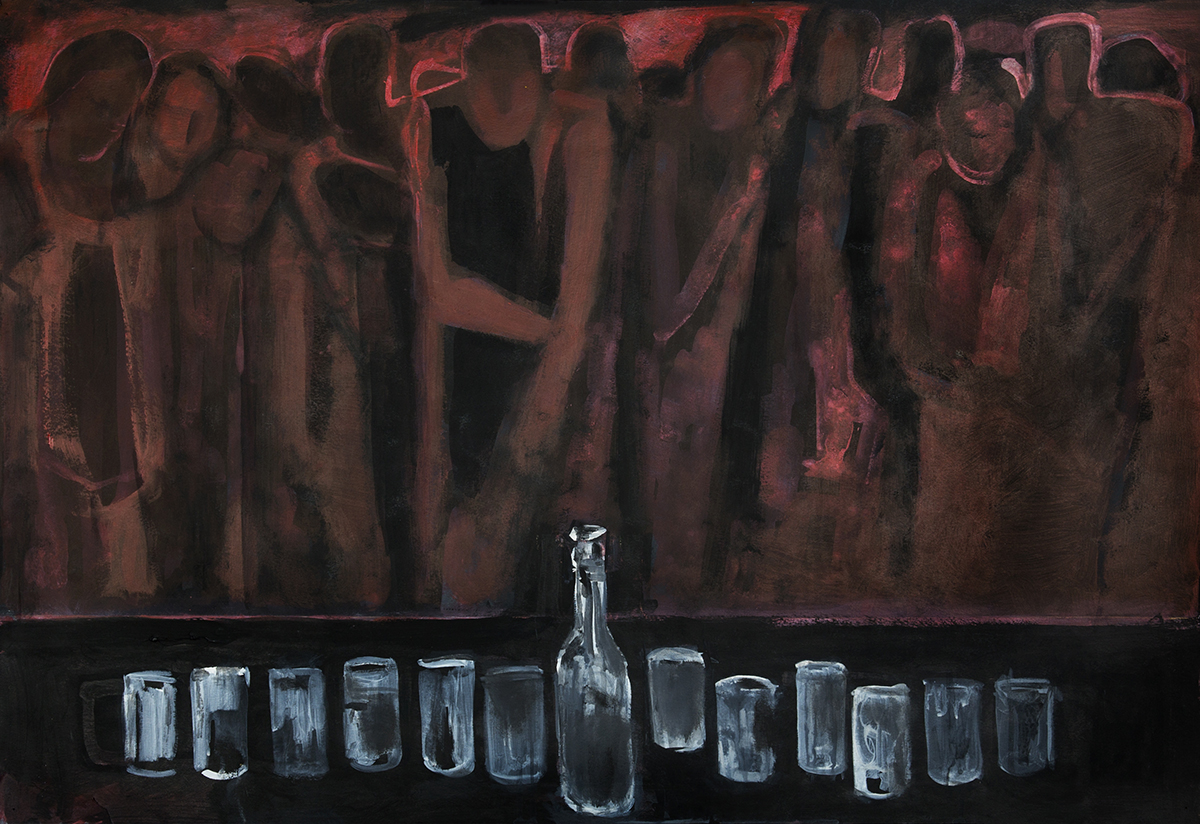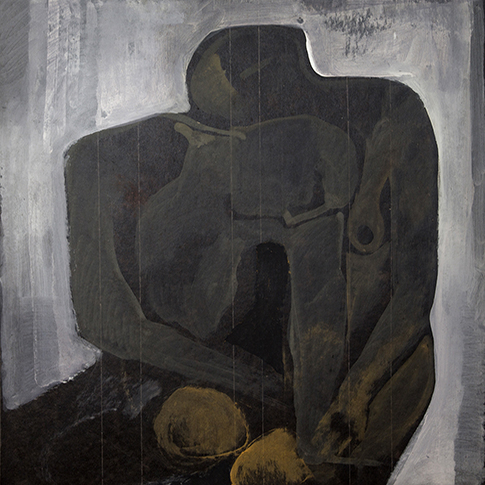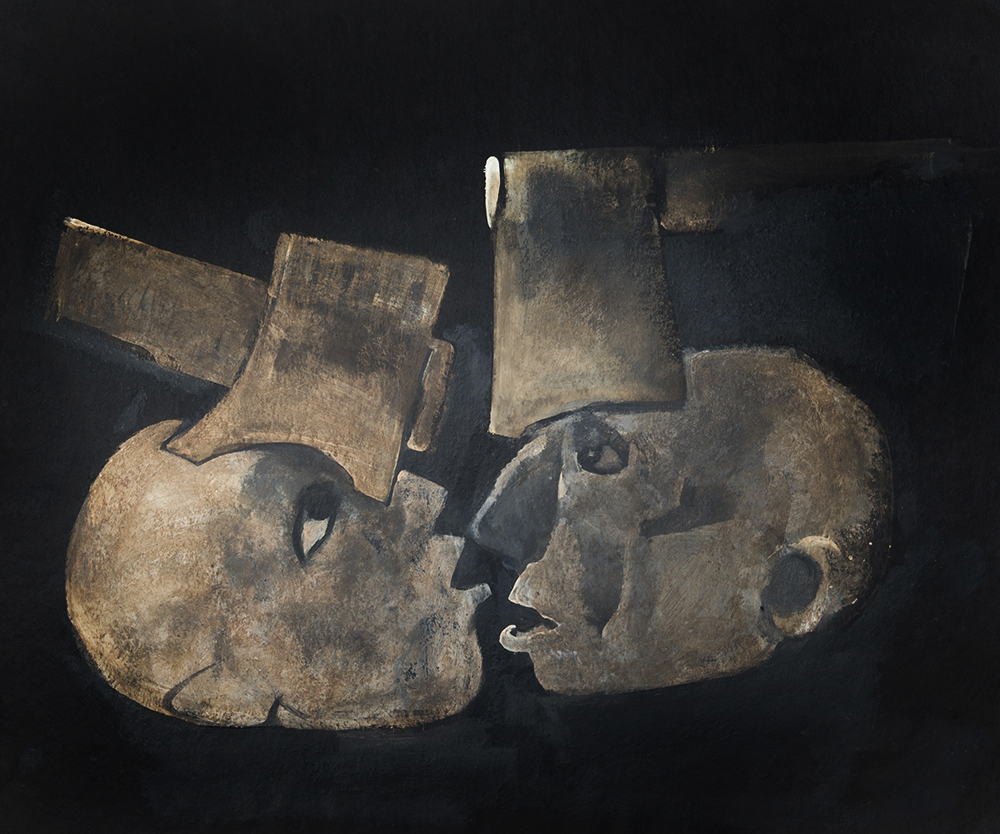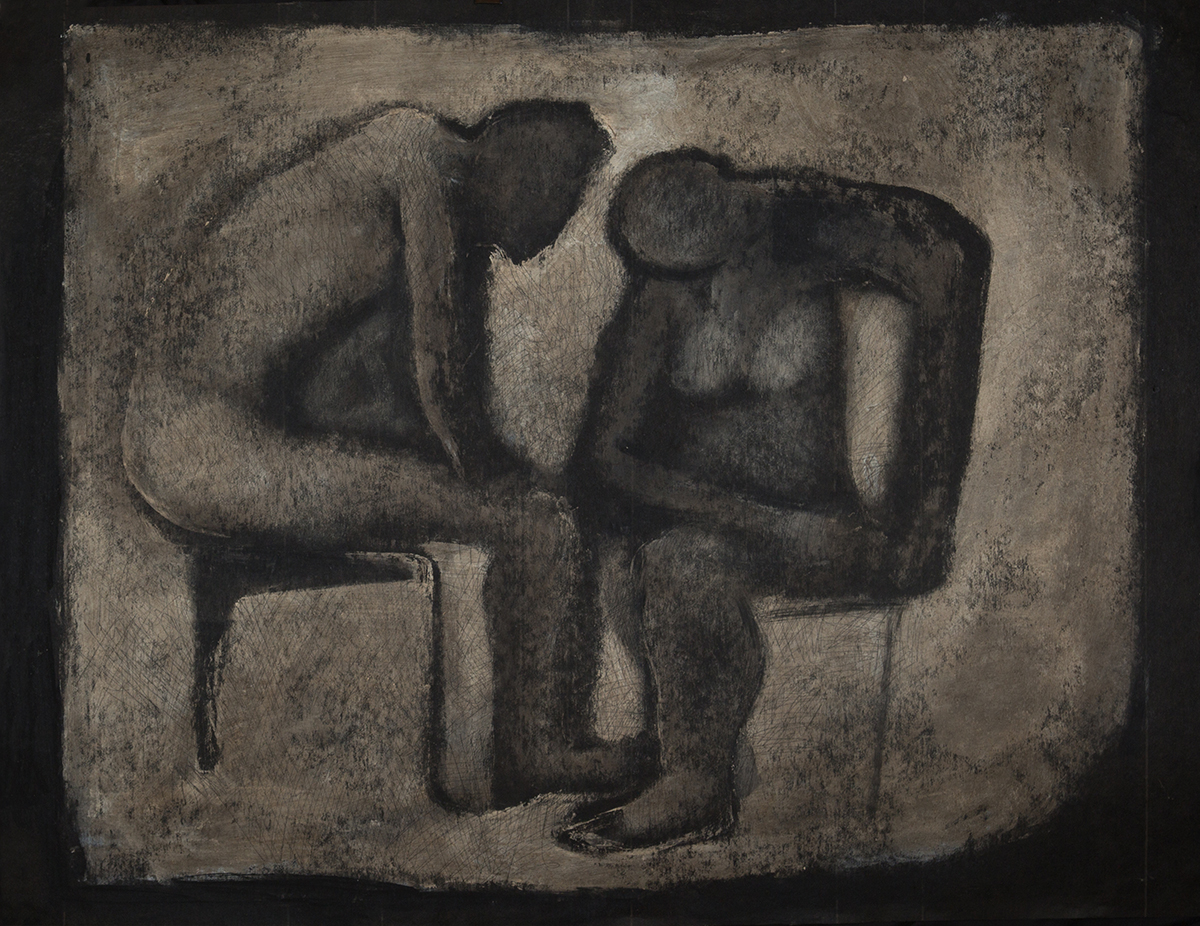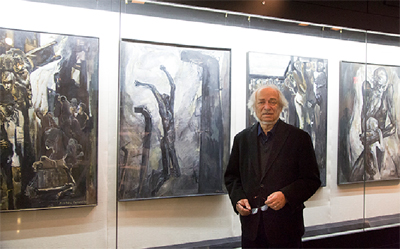Mikhail Turovsky. Master of Contemporary Art
Nearly 40 years ago I fled a country in which the totalitarian system reigned in both life and art.
In my new life, the prevailing force was freedom. In the world of art, I came face to face with an enormous number of schools, systems, movements, directions. I saw all the twists and innovations of contemporary Western art, which as it turns out is not so free, dependent as it is on the “money bag.” But I came to the West a fully formed person, with a clear conception of what art means to me. This conception hasn’t changed. Art, for me, is a means of expressing my perception of the world. Life is a tremendous gift, but the great tragedy is inherent within it. This joy and tragedy is experienced differently by each individual. Other artists, both contemporary artists, and artists of the past move me to the extent that they are able to convey their individual perception of life. I agree with Paul Valery when he said that art does not exist; artists exist.
All my life I have harbored a tremendous respect and love for traditional forms of visual art: painting, sculpture, drawing. There has been a great human achievement in these fundamental forms, and I think that there are no limits for the artist working within them, whether it is photorealism or pure abstraction or the furious expressionism.
I find a continuous and constantly renewing source of inspiration in this kind of art, from the cave paintings to Picasso and Matisse, or Fedor Krichevsky, Alexander Deineka, and Alice Neel. But I am absolutely tolerant of the multitude of movements in contemporary art. I follow everything that is happening with keen attention and curiosity. I try to process all this information, and of course, it leaves its mark on me, but ultimately I would like to remain true to myself. Which is to say, I am not impervious to what I consider to be both the achievements and failures of contemporary art.
Total permissibility, negation, derision are part of the practice of many contemporary artists. Sometimes this sense of total permissibility evokes envy in me, but I have lived long enough as an artist, have evolved, so to speak, and that forces me to keep my integrity. I think that many contemporary artists have moved away from self-expression toward self-assertion, and use any available means for this.
I do not tire of repeating that what I believe, and what I try to convey in my work is humanism. In art, the measure of all things for me is the magnitude that defines the human being, with his pursuit of happiness, which often goes unfulfilled, his pathos, limitations, and tremendous life force. There are many theoretical and scientific approaches in contemporary art, many attempts to confine or categorize an artist’s work into a theoretical construction, but this turns art into a game played by mediocre players.
I do think that my work aims toward the exploration of human reality. The human condition manifests for me in the human body, the body of a woman, man, child. Through its life and its fear of the cessation of life.
I want also to convey another reality, the reality of the world around me – the forces of nature, the elements. These are not inanimate forces for me, and I approach them in the same way that I approach the human body. I want to defy the natural world, probably in the pantheistic sense.
I am extremely compelled by the idea of the feminine, life-giving force.This is the fundamental part of my work. And here is what’s interesting: in, Ukrainian as opposed to English, all nouns are classified as masculine, feminine, or neuter. All the essential notions: life, love, joy, misfortune, hope, faith, passion, sorrow, death, and many, many other things are feminine nouns. In the image of a woman, one can convey all that is harmonious and disharmonious, all junctions and disjunctions, beginnings and ends.
I am in awe of the human body – for me, it is the triumph of life. Life can inflict serious wounds, but I still stand in awe of it. For me, the human body is only the initial impulse for working, and when that initial impulse to start a work occurs, there begins an autonomous process of transformation of my internal state into lines, shapes, harmonious or disharmonious combinations of color. This process can be an intensely passionate multi-form transformation. Or, on the contrary, it can transition into simple, unified forms.
At this stage in my life, I truly don’t feel any internal limitations. If I feel that I must move toward the more abstract perception of things or objects, that previously I might have perceived as being concrete, I do so. I also do not hesitate if I feel that I must move away from abstraction in order to touch upon the real. I feel myself to be a free in this regard, free from responsibilities in relation to my past, to my reputation, to so-called ‘style’, which in my case I would loosely define as Figureabstract Expressionism.
Exhibiting gives me the opportunity to step back from my work, to see it in the context of a museum, gallery, or public space. I can gauge what I’ve accomplished and where I see the possibility of conveying my vision through other approaches or constructions. The encounter with the audience is also essential for me. I feel that I am connecting with the public and I am heartened that they value the importance of ideas and mastery in art.
Excerpts from a conversation with
art critic Serge Lanczner.
Paris, New York. 2007
Translation to Ukrainian:
Майже 40 років тому я покинув країну, в якій панувала тоталітарна система як у житті, так і в мистецтві.
У моєму новому житті переважною силою була свобода. В світі мистецтва я зустрiвся з величезною кількістю шкіл, систем, рухів, напрямків. Я бачив усі витребеньки та інновації сучасного західного мистецтва, яке, як виявляється, не таке вже й вільне, а залежить вiд “грошового мішка”. Але я прийшов на Захід цілком сформованою людиною, з чітким уявленням про те, що для мене означає мистецтво.
Моя концепція цього не змінилася. Мистецтво для мене є засобом вираження мого сприйняття світу. Життя є величезний дарунок, але йому притаманна ще й велика трагедія. Ця радість і ця трагедія переживаються по-різному кожною людиною. Художники, як сучасні, так і митці минулого, захоплюють мене до тої міри до якої вони здатні передати своє індивідуальне сприйняття життя. Я згоден з Полем Валері, який сказав, що мистецтва не існує: існують митці.
Все моє життя я маю величезну повагу і любов до традиційних видів візуального мистецтва: до живопису, скульптури, малюнока. В ціх фундаментальних формах були здобутi великi людськi досягнення.
Я думаю, що немає меж для художника, що працює в них, будь то фотореалізм або чистa абстракція чи найшаленiйший експресіонізм.
Я знаходжу безперервне і постійнo відновлююче джерело натхнення в цьому виді мистецтва, починаючи від печерних малюнкiв до Пікассо та Матісса, або Федіра Кричевського, Олександра Дейнеки чи Аліс Ніл. Але я є абсолютно толерантним щодо безлічі рухів у сучасному мистецтві. Я придивляюсь до всього, що відбувається з великою увагою та цікавістю. Я намагаюсь опанувати всю можливу інформацію, і зазвичай, це залишає свій слід, але в остаточному підсумку я хотів би залишитися вірним самому собі. Що означае: не непроникним до того, що я вважаю досягненнями та невдачами сучасного мистецтва.
Загальна вседозволенiсть, заперечення, осмiяння є частиною практики багатьох сучасних художників. Таке відчуття повної вседозволенoстi навiть викликає в мене заздрість, але я прожив досить довго, як художник, і це змушує мене зберігати мою цілісність. Я думаю, що багато сучасних митців помiняли самовираження на самоствердження і використовують будь-якi доступні засоби для цього.
Я не втомлююсь повторювати: те, у що я вірю, і те, що я намагаюся передати в моїй роботі, – це гуманізм. В мистецтвi міра всіх речей для мене – величина, яка визначає людину, з її прагненням щастя, з її пафосом, її обмеженістю i, в той же час, з її величезною життєвою силою. Існує багато теоретичних та наукових підходів в сучасному мистецтві, багато спроб обмежити або класифікувати творчість художника зaдопомогою теоретичних конструкцiй, але це перетворює мистецтво на гру посереднiх гравців.
Я думаю, що моя робота спрямована на вiдкриття людської реальностi. Людський стан проявляється для мене через людське тіло: тіло жінки, чоловіка, дитини, через його життя і його страх перед припиненням життя.
Я також хочу передати іншу реальність – реальність свiту навколо мене – сил природи, її стихiї.
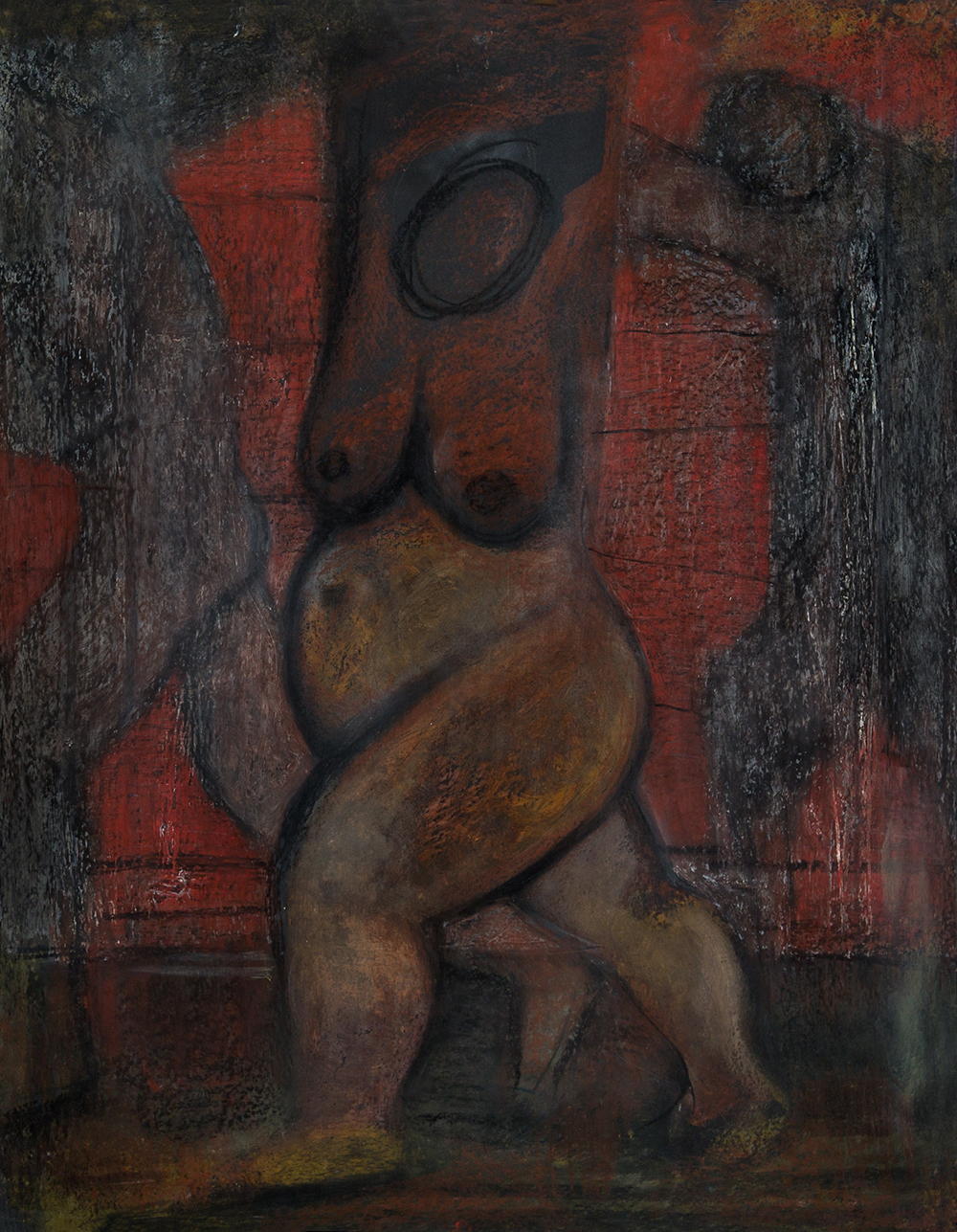
Це не неживі сили для мене, і я підходжу до них так само, як я наближаюсь до людського тіла. Я хочу обожнювати світ природи, мабуть, в пантеїстичному сенсі. Я надзвичайно захоплений ідеєю жіночої, життєдайної сили. Це фундаментальна частина моєї роботи. І ось що цікаво: в украiнськiй мові, на відміну від англійської, всi іменники класифікуються як чоловічого, жіночого, або середнього роду . Всі основні поняття: любов, радість,
невдача, надія, віра, пристрасть, скорбота, смерть і багато, багато інших речей є жіночими іменниками. Черезобраз жінки можна передати все, що є гармонійним і дисгармонійним, всі з’єднання і розбіжності, початки та кінці.
Я в захопленi вiд людського тіла – для мене воно триумф життя. Життя може завдати серйозних ран, але я все ж таки в захопленнi від нього. Для мене людське тiло є лише первинним імпульсом для роботи, і коли з’являється той початковий імпульс, починається самостійний процес перетворення мого внутрішнього стану в лінії, форми, гармонійні або дисгармонійні комбінації кольору. Цей процес може бути сильно пристрасним багатоформним перетворенням. Або, навпаки, це може бути перехід у прості, уніфіковані форми.
На цьому етапі мого життя я дійсно не відчуваю ніяких внутрішніх обмежень. Якщо я відчуваю, що повинен рухатися в бік більш абстрактного сприйняття тих речей або предметів, що раніше я міг сприймати як конкретнi, я так i роблю.
Я також не вагаюсь, якщо я відчуваю, що повинен відходити від абстракції, щоб торкнутися реальностi. Я відчуваю себе вільним в цьому відношенні, позбавившись відповідальності що до мого минулого, до моєї репутації, до так званого “стилю”, який у моєму випадку я б вільно визначив як фігур-абстрактний експресіонізм.
Виставки дають мені можливість відступити від моєї роботи, щоб побачити її в контекстi музею, ґалереї або громадського простору. Я можу вiдчути, чого я досягнув і побачити можливість передачі мого бачення за допомогою інших підходів або конструкцій. Зустріч з людьми для мене також дуже важлива. Я спілкуюся з людьми, що приходять на мої виставки, і я бачу, що люди цінують, як i я, необхiднiсть сенсу та майстерностi в мистецтвi.
Витяги з бесіди з мистецтвознавецем Сержем Ланчнером.
Нью Йорк-Париж (переклад з англiйськоi)

